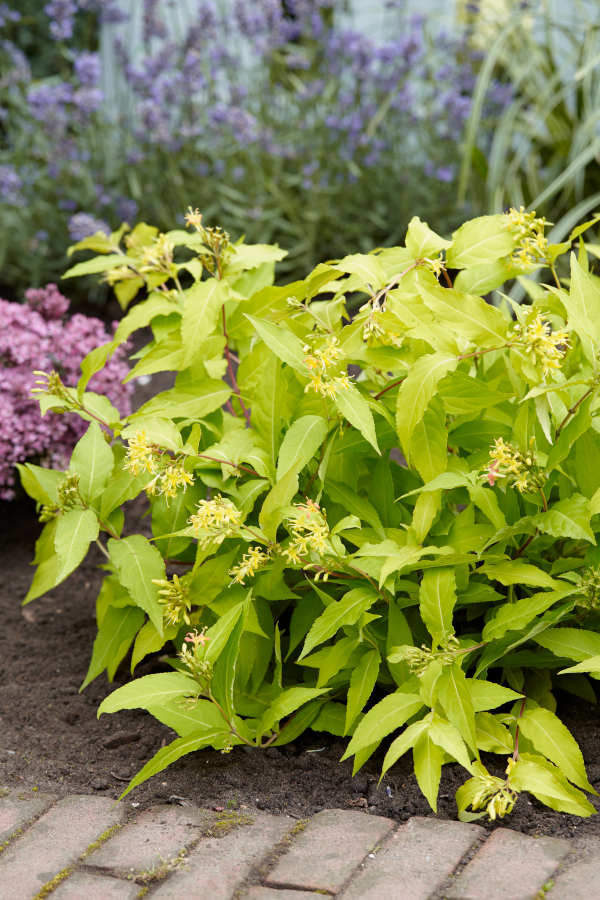How to grow Diervilla
Also known as bush honeysuckle, Diervilla is a low, spreading, deciduous shrub from open woodland in North America.
Traditionally less popular in cultivation than its showier close relative Weigela, from Asia, its merits are now increasingly coming to the attention of gardeners. With a long summer show of bright yellow flowers and, thanks to modern breeding a dazzling range of foliage colours, Diervilla make a reliable, fuss-free shrub for the garden. It is relatively fast-growing (often reaching flowering maturity in just three years from seed), tolerant of difficult conditions where little else will grow, and can live for many decades.
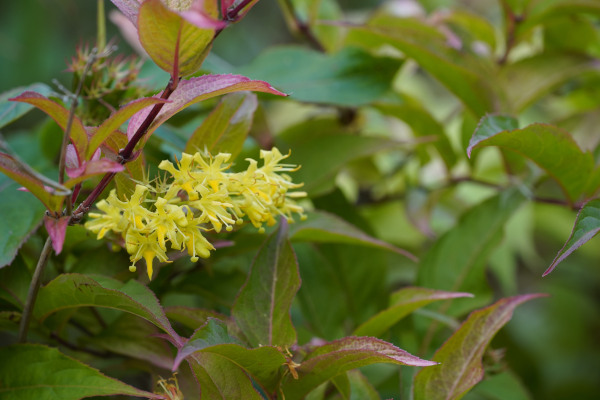
Zantedeschia is a genus of flowering plants from the family Araceae and is native to southern Africa. With a rich history dating back to the Ancient Romans, these deciduous or semi-evergreen perennials have been used as a symbol of celebration. Zantedeschia was Named after Professor Giovanni Zantedeschia, an Italian botanist.
There are two main forms of Zantedeschia: hardy and tender. Hardy forms of the plant can be grown outdoors, enjoy moist soil and full sun or partially shaded conditions - these are known as Arum lilies. Tender forms of Zantedeschia prefer being grown in containers or pots and should be brought inside over the winter - these are known as Calla lilies.
With tuberous flora in all colours from whites, yellows and oranges to deep reds and purples, Zantedeschias are not to be overlooked in any garden, as long as they have sufficient sunlight to grow in.
Ready to learn more about growing Zantedeschia? Read on for all there is to know...

Key Information
Soil pH
Position
Hardiness

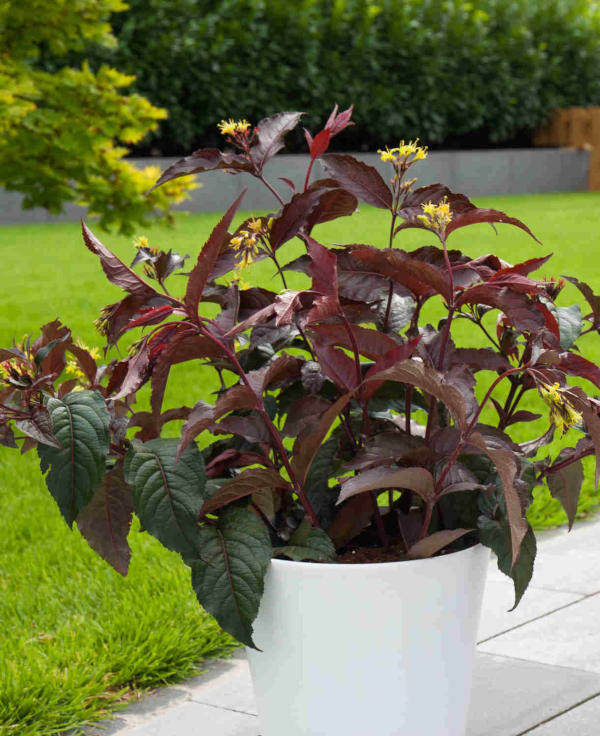
Where & when to plant Diervilla
Position - A spot in sun or partial shade (deep shade is best avoided), which may be sheltered or exposed to wind. Note that foliage colour is more impressive in full sun.
Soil - Tolerant of a wide range of soils, though fertile and well-draining is the ideal. Avoid waterlogged conditions.
Flowering Period - Summer
Hardiness - Hardy. Usually rated H5 which means able to withstand temperatures down to between -10 and -15°C (i.e., fine throughout most of the UK).
For best results, plant in autumn or spring. An autumn planting can be done by those gardening in mild conditions (and broadly speaking, this is the southern half of the UK). For those liable to cold, wet winters, it is best to wait until spring (generally the northern half of the UK). Planting can also be carried out in summer though only as a last resort and with plenty of aftercare (i.e., watering), as woody plants struggle to establish well from this.
Diervilla is well-suited to a shrub border, woodland garden, or a rock garden (which can be handy in restricting its natural spread). A fast growing, suckering, spreading nature means it is also useful for erosion control when massed along banks and hillsides. Quick to thicken, it is also highly effective as a low hedge. Space plants 60-90cm apart for this.
Diervilla needs space to spread and roam, meaning that whilst short term success may be had in a container, in the long term it does best in open ground.
How to plant Diervilla
- Water well and allow to drain before planting.
- Dig the soil area over, removing any large stones and weeds and breaking up any lumps. Mix in plenty of organic matter such as manure or garden compost.
- Rake level and firm with your heels. Rake level again.
- Dig a hole twice the size of the rootball.
- Place the plant in the hole, ensuring the top of the rootball sits level with the surface of the soil. To high and the roots can dry out, too low and the stem can rot.
- Backfill with soil and firm in gently with your foot.
- Soak well with water.
- Mulch around the base with well-rotted organic matter such as manure or garden compost.
- For planting in containers (remember – it’ll only grow well this way for a handful of years before the restriction becomes a problem), first choose an appropriately sized pot. It’s fine to start with a fairly large pot for this fast-growing shrub, as opposed to the usual advice of starting small and gradually increasing the size.
- If you are using a large or heavy pot, it can be a good idea to fill and plant it in situ to save yourself the trouble of moving once full.
- Use a good quality potting compost with plenty of horticultural grit mixed in, and, if not already present in the compost (check the description on the bag) some slow-release fertiliser granules.
- Start by partially filling the pot with compost; enough so that when placed on it the top of the roots sits about 3cm lower than the top of the pot.
- Infill all the space surrounding the roots with compost, firming down with your fingers then adding a little more so the plant is held tight.
- Pick up the pot (if you can!) and lightly tap on the potting bench or ground a few times to help further settle the compost around the plant.
- Soak well with water.
- A mulch with horticultural grit will look attractive and help to prevent a ‘cap’ or crust forming on the top of the compost (something container plants can suffer due to the artificial nature of their watering).
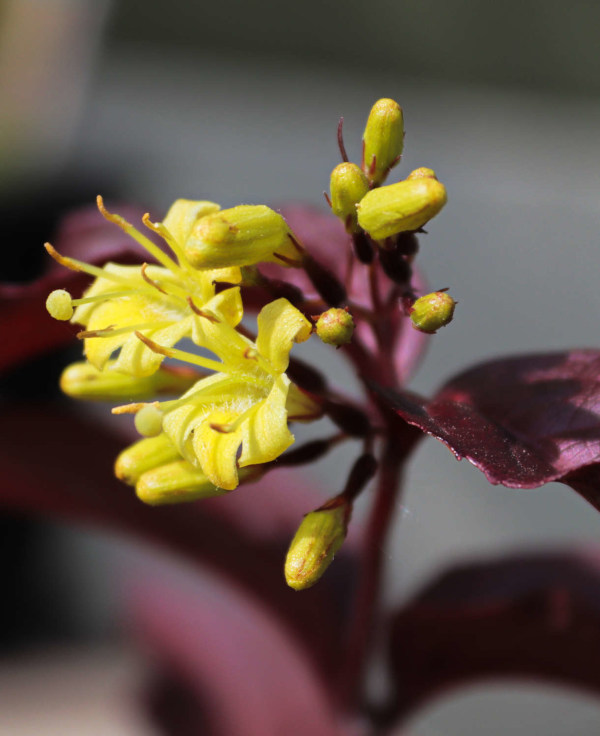
What to plant with Diervilla
Try using Diervilla with other low-growing, flowering shrubby companions to create a pretty, undulating shrub border – the ultimate in easy gardening. Think along the lines of weigela, daphne, sarcococca, and skimmia, or visit our range of shrubs for more ideas.
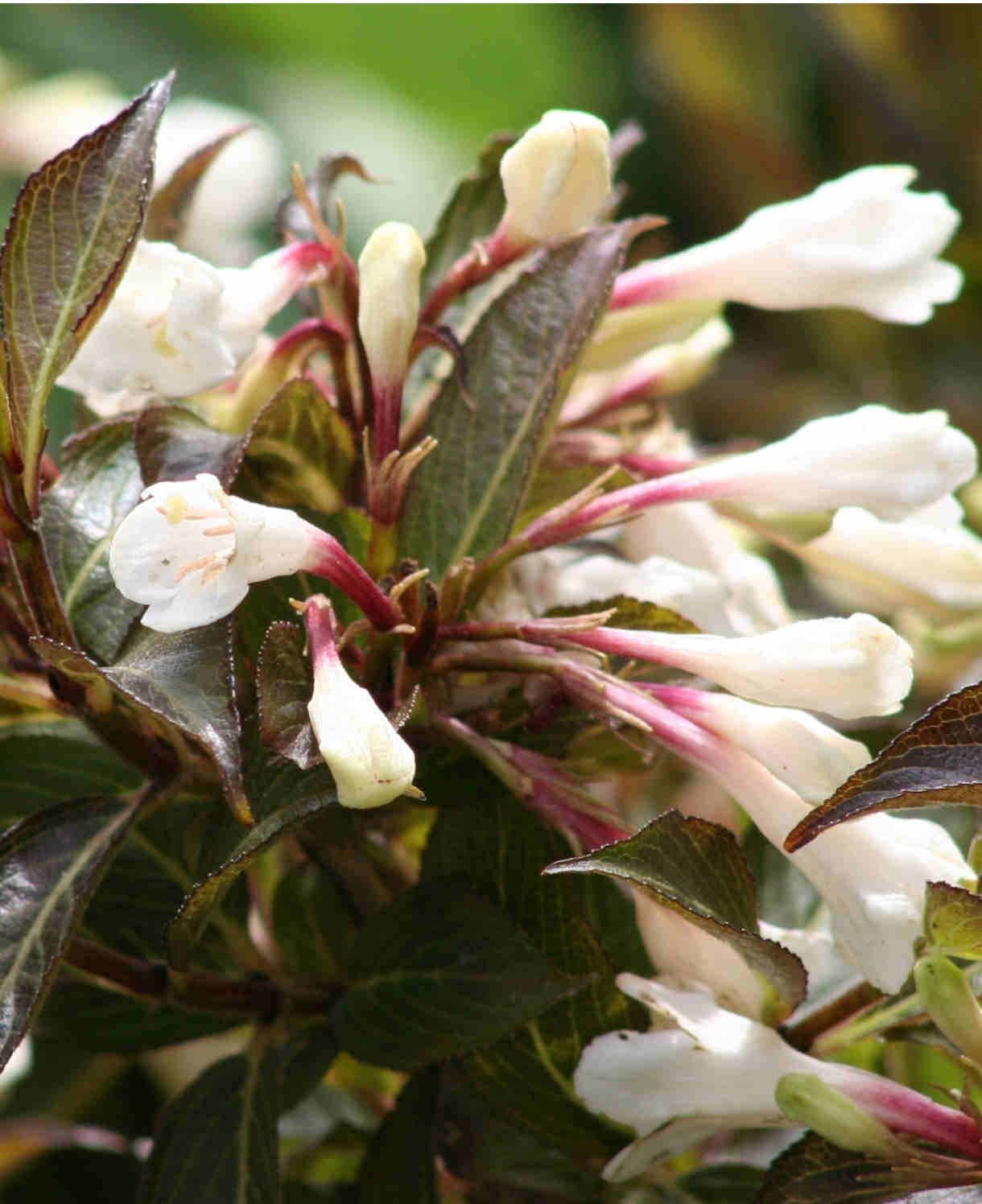

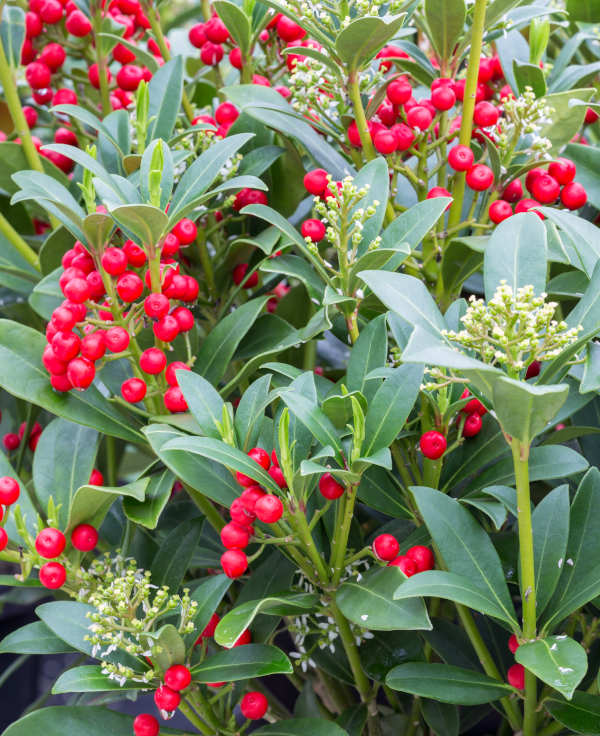
How to care for Diervilla
Pruning and Deadheading
Diervilla is classed as RHS Pruning Group 6. This means it flowers on the current year’s growth and therefore benefits from annual pruning in early to mid-spring. Not only does this boost flowering, but it keeps the shrub looking fresh and maintains good overall health. Prune back by up to a third, and remove any thin, weak growth completely.
Overall spread can be reduced by digging out unwanted suckers in late winter with a sharp spade. These can either be disposed of (we advise against putting them on the compost heap, as they may regrow) or potted up to make new plants. See ‘How to Propagate Diervilla’ for more information.
Watering
Diervilla is not especially thirsty, however like all woody plants it does best with regular watering for its first couple of growing seasons in the ground to encourage root establishment. After this it is known to be drought tolerant and should only need watering in prolonged periods of extremely hot, dry weather. An annual mulch is also useful for locking in moisture – more on this in our ‘Feeding’ section below.
Container-grown Diervilla has less access to moisture and, as it is fast growing and likely to fill a pot quickly, can be watered freely throughout the growing season. Try to avoid the compost drying out completely, being aware that this can happen in as little as 24 hours during the height of summer and sometimes even less for very full containers. From mid-autumn, the British climate tends to take over watering needs, though do remember to step in in the event of an unseasonably dry spell.
Feeding
To give it the best possible start, feed your Diervilla for its first couple of years in the ground with a general-purpose granular feed applied to the surface of the soil and lightly worked in (known as a ‘top dress’). This is best done in late winter, along with a mulch of well-rotted organic matter (i.e., a layer of manure or garden compost applied to the soil around the plant), which has the added benefit of suppressing weeds and locking in moisture.
Once your Diervilla is well established, an annual mulch should provide sufficient nutrients, however, apply a top dress as above if ever you feel an extra boost is needed.
Container-grown plants rely more on the gardener for nutrition. Get off to a flying start by making sure you use a good quality compost with slow-release granules mixed in, then throughout the growing season (March to September) apply a monthly liquid feed. An annual top dress is also advisable: each spring, scrape off the top 5cm of compost and replace with fresh.
Cold Protection
Diervilla is hardy enough to withstand winter in the UK without the need for additional protection, though like all plants it can be more susceptible to the cold when grown in a container. If you garden in a cold or exposed area, it can therefore be worth wrapping the base in hessian, fleece, or bubblewrap to insulate the roots. This also protects the pot from frost damage.
Pests and Diseases
Diervilla is considered trouble free.
By far the simplest way to propagate Diervilla is to remove and pot up suckers in late winter.
- Choose a day when the ground is not frozen or waterlogged.
- Using a spade, dig up strong, healthy suckers, severing from the parent plant with clean, sharp secateurs.
- Pot into a container filled with a well-draining compost mix.
- Water thoroughly.
- Grow on in a cool yet frost-free environment such as a cold frame, unheated greenhouse, or against a south-facing wall, keeping well-watered yet not soggy.
- When large enough to be planted out, do so following our ‘How to plant Diervilla’ guide above.
* Many plants carry Plant Breeders Rights and cannot be propagated for commercial purposes.
Common Diervilla questions
Where can I see a good example of Diervilla planting?
The National Collection is held at Sheffield Botanic Gardens in South Yorkshire.
Is Diervilla related to honeysuckle?
It is in the same plant family (Caprifoliaceae), though a separate genus. Its closest relative is weigela.
Is Diervilla often confused with anything else?
Lonicera japonica is also known as bush honeysuckle, though is a very different, invasive, climbing plant.
Is Diervilla evergreen?
No, all species of this shrub are deciduous, meaning their leaves drop in autumn and are replaced with fresh in spring.
Will Diervilla grow in shade?
Partial shade is fine, though the most vibrant foliage colour and quantity of flowers is to be had in full sun. Full/ deep shade is best avoided.
Is Diervilla invasive?
Left to its own devices it will spread via suckers to form a dense thicket, however this can be easily controlled with annual restrictive pruning if necessary. See ‘Pruning and Deadheading’ above for more information.
